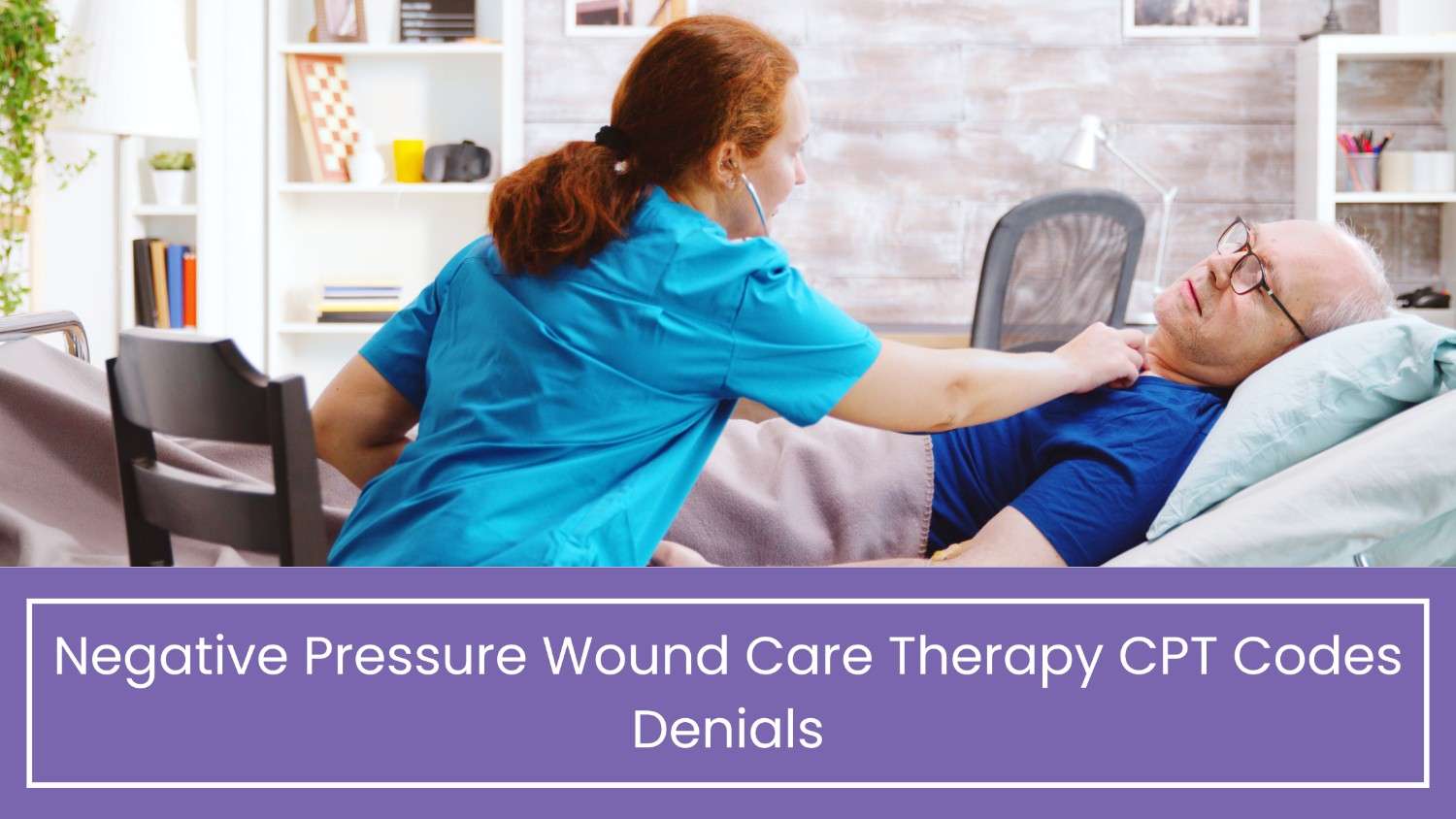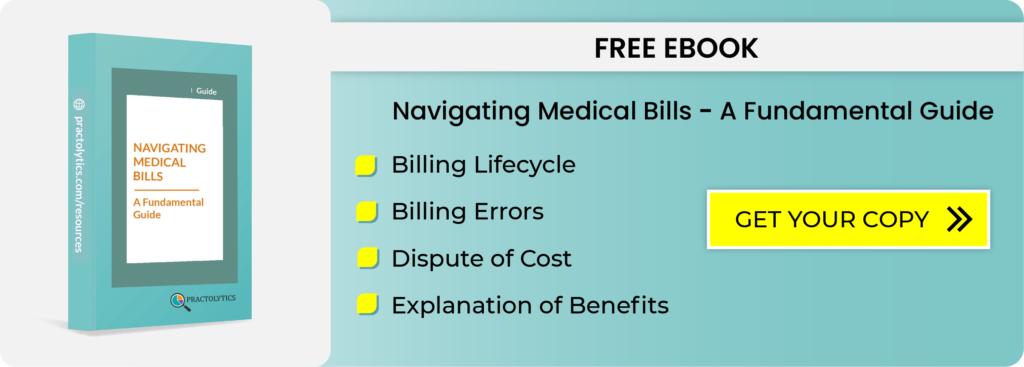Negative Pressure Wound Care Therapy CPT Codes Denials
Negative Pressure Wound Therapy (NPWT) has evolved into a sophisticated and widely adopted approach in modern wound care. Its applications span across diverse wound types, addressing the intricacies of chronic wounds, post-surgical incisions, and traumatic injuries. As technology and medical understanding continue to advance, NPWT has become an integral part of the armamentarium for healthcare professionals dealing with complex wound management.
Table of Contents
Components of NPWT System
Wound Dressing: The design of NPWT dressings has seen significant refinement. Specialized foams and gauzes are now engineered to not only facilitate optimal negative pressure distribution but also to accommodate the complexities of various wound geometries. Some advanced dressings are even equipped with technologies to promote antimicrobial activity, further enhancing their therapeutic efficacy.
Tubing: The tubing component has become more flexible and user-friendly, allowing for easier application and adjustments. Integration of smart technologies in some systems enables continuous monitoring of pressure levels and alerts for potential leaks, ensuring the reliability of the therapy.
Canister: Canister technology has evolved to enhance usability and reduce the frequency of replacements. Some systems now incorporate larger capacity canisters with innovative features for easy disposal and minimal disruption to the NPWT process.
Vacuum Pump: Advances in vacuum pump technology have led to more compact, quieter, and energy-efficient devices. These improvements contribute to enhanced patient comfort and increased portability, allowing for NPWT to be administered in various clinical settings.
Indications for NPWT
Chronic Wounds: Ongoing research has expanded the understanding of how NPWT benefits chronic wounds. Beyond promoting granulation tissue, NPWT has been shown to modulate the wound microenvironment, influencing cellular activities and signalling pathways that contribute to prolonged wound healing.
Surgical Wounds: NPWT is now being employed in innovative ways post-surgery. Techniques like closed-incision NPWT are gaining popularity, offering a proactive approach to prevent complications in high-risk surgical incisions. The therapy has demonstrated efficacy in reducing surgical site infections and dehiscence rates.
Traumatic Wounds: The application of NPWT in traumatic injuries has become more nuanced. It is not merely about creating a conducive environment for healing but also about managing the complexities of tissue damage, promoting regenerative responses, and minimizing scarring.
NPWT Documentation Guidelines
Patient Information: Advanced NPWT documentation begins with a thorough understanding of the patient’s overall health. Integration of electronic health records (EHRs) ensures seamless access to patient data, fostering a holistic approach to care.
Wound Assessment: Imaging technologies, such as advanced wound imaging systems and 3D reconstructions, provide a more detailed understanding of wound characteristics. This, coupled with molecular analysis, contributes to a comprehensive assessment and personalized treatment plans.
Indication for NPWT: Precision medicine principles are increasingly guiding the indication for NPWT. Biomarker analysis and genetic profiling may play a role in determining the patient’s response to NPWT, allowing for a more tailored and effective approach.
NPWT Initiation Details: Automated documentation systems integrated with NPWT devices streamline the recording of initiation details. Real-time data capture facilitates immediate adjustments to the therapy plan based on the patient’s response.
Negative Pressure Settings: Dynamic pressure modulation systems are emerging, allowing for adaptive adjustments based on real-time wound conditions. These systems aim to optimize therapeutic effects while minimizing patient discomfort and complications.
Monitoring and Evaluation: Artificial intelligence (AI) algorithms are being incorporated into NPWT systems to aid in continuous monitoring and evaluation. These algorithms analyse data from sensors, providing predictive insights into wound healing trajectories.
Documentation of Dressing Changes: Automated image capture during dressing changes, integrated with documentation systems, allows for visual tracking of wound progression. This not only aids in clinical decision-making but also serves as a valuable educational tool for patients and caregivers.
Patient Tolerance and Compliance: Wearable technologies and patient-reported outcome measures (PROMs) contribute to the documentation of patient tolerance and compliance. Remote monitoring options enhance the understanding of how patients adapt to NPWT in their daily lives.
Complications and Adverse Events: AI-driven risk prediction models assist in identifying potential complications before they manifest clinically. This proactive approach enables timely interventions, reducing the incidence of adverse events.
Communication with Other Healthcare Providers: Interoperability of EHR systems ensures seamless communication among healthcare providers. Telemedicine platforms further facilitate collaborative discussions, allowing for real-time consultation on complex cases.
Discontinuation of NPWT: Automated decision support systems, integrated with patient data and healing trajectories, provide evidence-based recommendations for discontinuation. This assists in optimizing the timing of NPWT cessation for each patient.
Follow-up and Outcomes: Patient-reported outcomes, coupled with AI-driven analytics, contribute to a comprehensive understanding of post-NPWT outcomes. Predictive modelling aids in setting realistic expectations for patients and tailoring follow-up plans accordingly.
Billing and Coding Information: Automated coding assistance tools, linked with billing systems, ensure accuracy and compliance with evolving healthcare regulations. This reduces administrative burden and enhances the efficiency of healthcare delivery.
Patient Education: Interactive educational platforms, including virtual reality (VR) simulations, empower patients with a deeper understanding of NPWT. Gamified applications may encourage active participation in self-care, contributing to better outcomes.
CPT Codes: The Blueprint of NPWT Sessions
97605 – NPWT, total wound(s) surface area less than or equal to 50 square centimetres:
– This code serves as the gatekeeper for NPWT sessions where the total surface area of the wound falls within a more compact range.
97606 – NPWT, total wound(s) surface area greater than 50 square centimetres:
– Conversely, when dealing with larger wound surfaces, healthcare providers turn to this code to accurately represent the scope of the NPWT session.
These Current Procedural Terminology (CPT) codes lay the groundwork for standardized communication, enabling healthcare professionals to articulate the complexity and intensity of NPWT services during billing and coding processes.
ICD-10 Codes: Navigating the Landscape of Diagnoses
In tandem with CPT codes, the International Classification of Diseases, 10th Edition (ICD-10) codes acts as a diagnostic compass, steering providers toward the accurate portrayal of the wound condition. Among the commonly used codes are:
L97 – Ulcer of lower limb, not elsewhere classified:
– Apt for categorizing lower limb ulcers, especially relevant in the context of NPWT.
T81.31 – Disruption of wound, not elsewhere classified:
– This code finds its place in scenarios where the disruption of wounds necessitates the application of NPWT.
T82.5XX – Infection and inflammatory reaction due to other internal prosthetic devices, implants, and grafts, not elsewhere classified:
– Relevant when NPWT is applied in conjunction with internal prosthetic devices or grafts.
Selecting the right ICD-10 codes is akin to crafting a diagnosis narrative, justifying the medical necessity of NPWT by aligning with the unique characteristics of the wound and the patient’s overall medical condition.
Modifiers: The Fine-Tuning Instruments
In the realm of medical coding, modifiers act as the fine-tuning instruments, adding specificity to the codes. For NPWT, modifiers such as -LT (left side), -RT (right side), or -25 (indicating a significant, separately identifiable evaluation and management service) provide additional layers of information, enhancing the precision of coding.
Navigating Denials: A Strategic Approach
Beyond understanding the codes, healthcare providers must navigate potential pitfalls leading to claim denials. Vigilance is crucial in areas such as:
- Lack of Medical Necessity Documentation: Thorough documentation is the bedrock for establishing the medical necessity of NPWT. It should vividly articulate the wound’s characteristics and the patient’s condition.
- Incomplete Documentation: To prevent denials, comprehensive documentation is essential, encompassing wound assessments, treatment plans, and patient responses.
- Prior Authorization Issues: Verification of payer-specific requirements and obtaining necessary prior authorizations, especially for non-emergent cases, serves as a preemptive strike against denials.
- Timely Filing: Adhering to timely filing limits imposed by different payers is paramount to preventing denials caused by submission delays.
- Equipment Rental Issues: Compliance with equipment rental agreements and accurate billing for related charges is a safeguard against denials associated with equipment discrepancies.
Final Words
As guardians of patient care, healthcare providers and coders navigate the maze of coding complexities with a shared purpose — to elevate the quality of care provided to each individual. They understand that the language of codes is not a detached set of symbols but a powerful means of communication, enabling a seamless exchange of information among members of the healthcare team.
In this collaborative effort, meticulous documentation becomes the canvas upon which the story of a patient’s health journey is painted. Each detail, from the initial wound assessment to the intricacies of treatment plans and the subsequent responses of the patient, is carefully captured. This narrative isn’t confined to administrative processes; rather, it is a living testament to the commitment to holistic patient care.
As NPWT continues to evolve, it not only exemplifies the synergy between technology and healthcare but also emphasizes the personalized and proactive nature of modern wound care. Advanced documentation practices, fuelled by innovative technologies, not only streamline clinical processes but also contribute to a deeper understanding of wound healing mechanisms. The integration of AI, wearable devices, and telemedicine into NPWT documentation further solidifies its role as a dynamic and patient-cantered modality in contemporary healthcare. Embracing these advancements ensures that NPWT remains at the forefront of wound care, continually enhancing patient outcomes and shaping the future of medical practices.
ALSO READ – Decoding CPT: Your Guide to Codes and Regulations 2024
Talk to Medical Billing Expert Today — Get a Free Demo Now!






